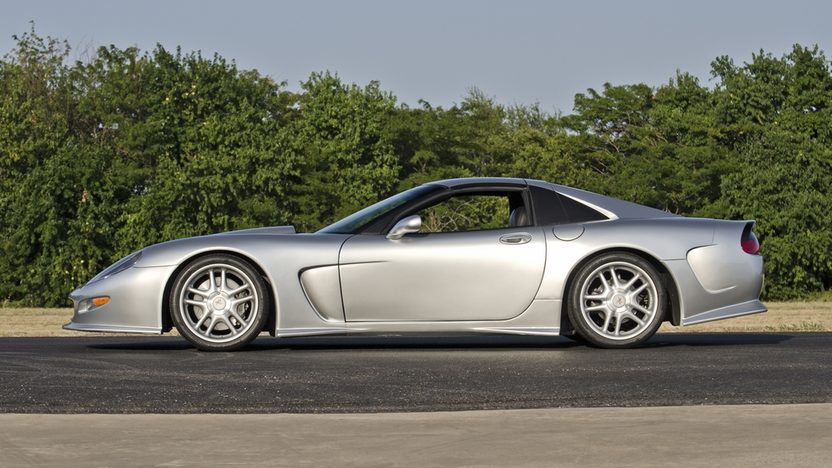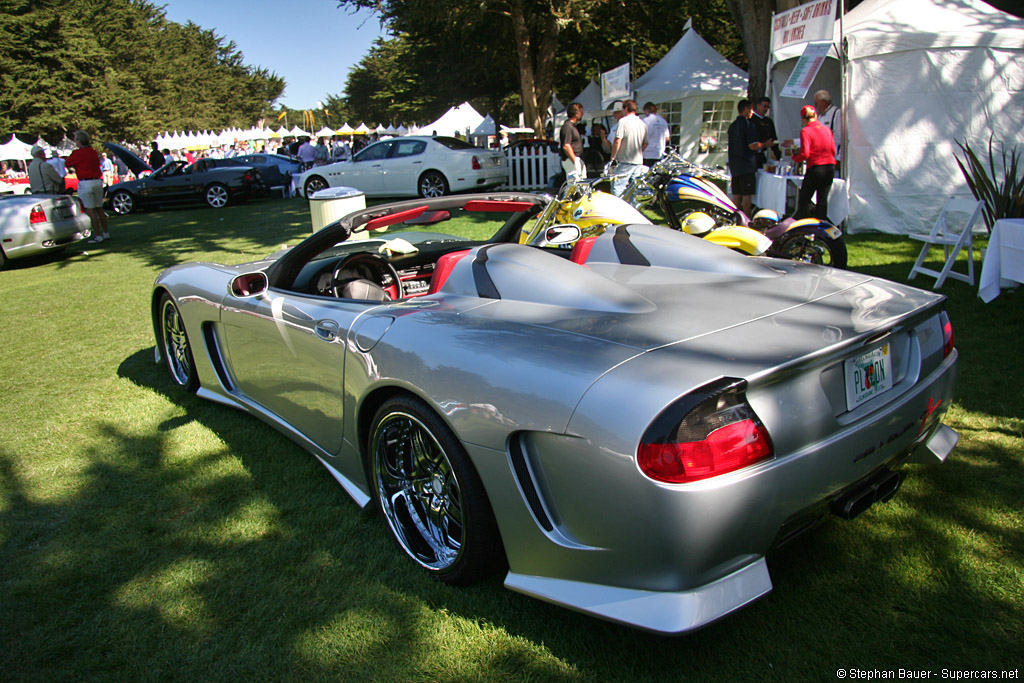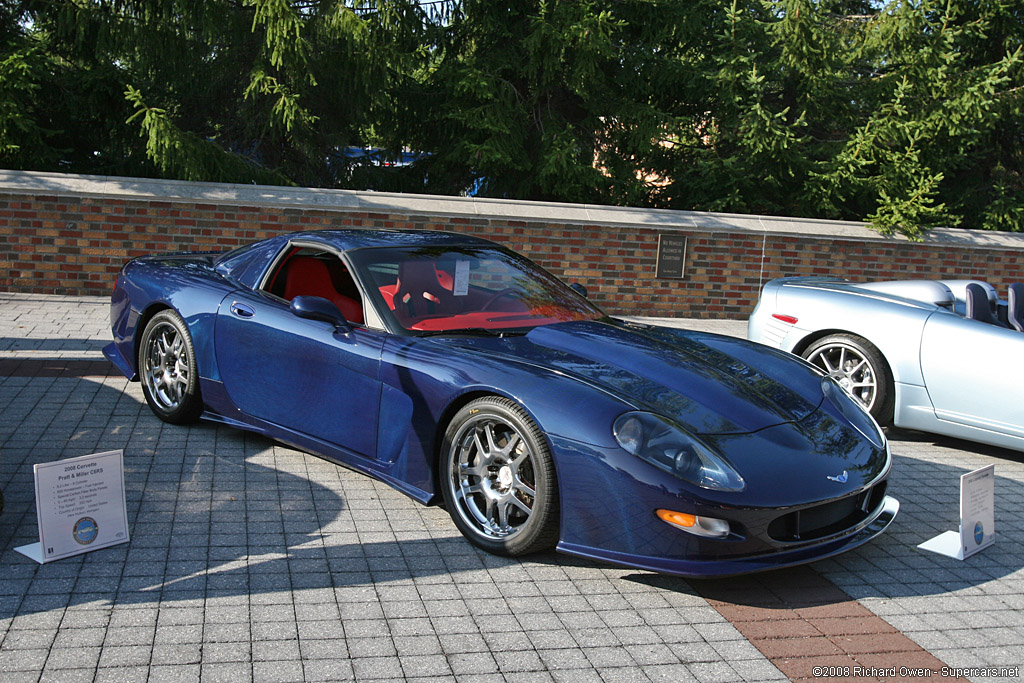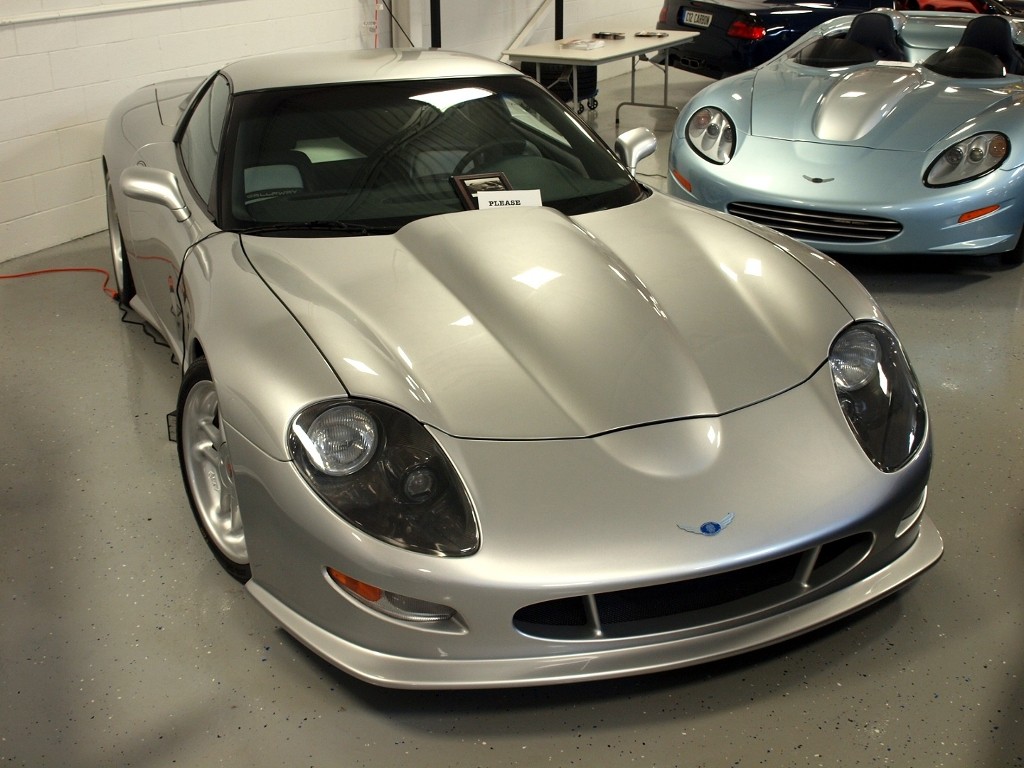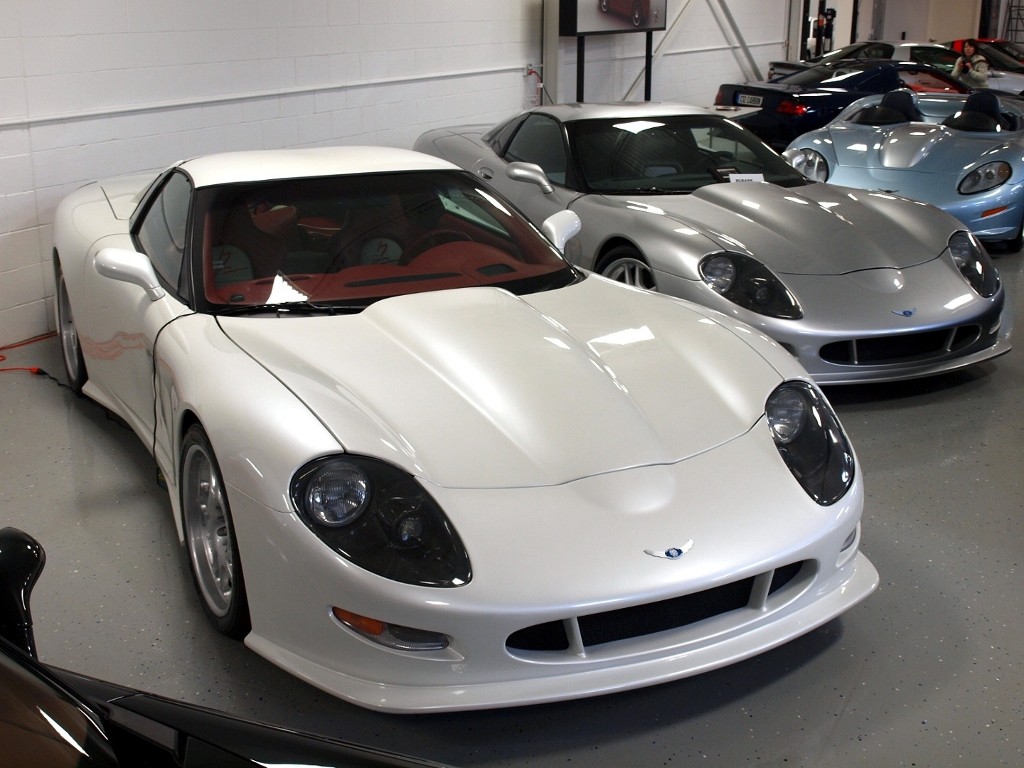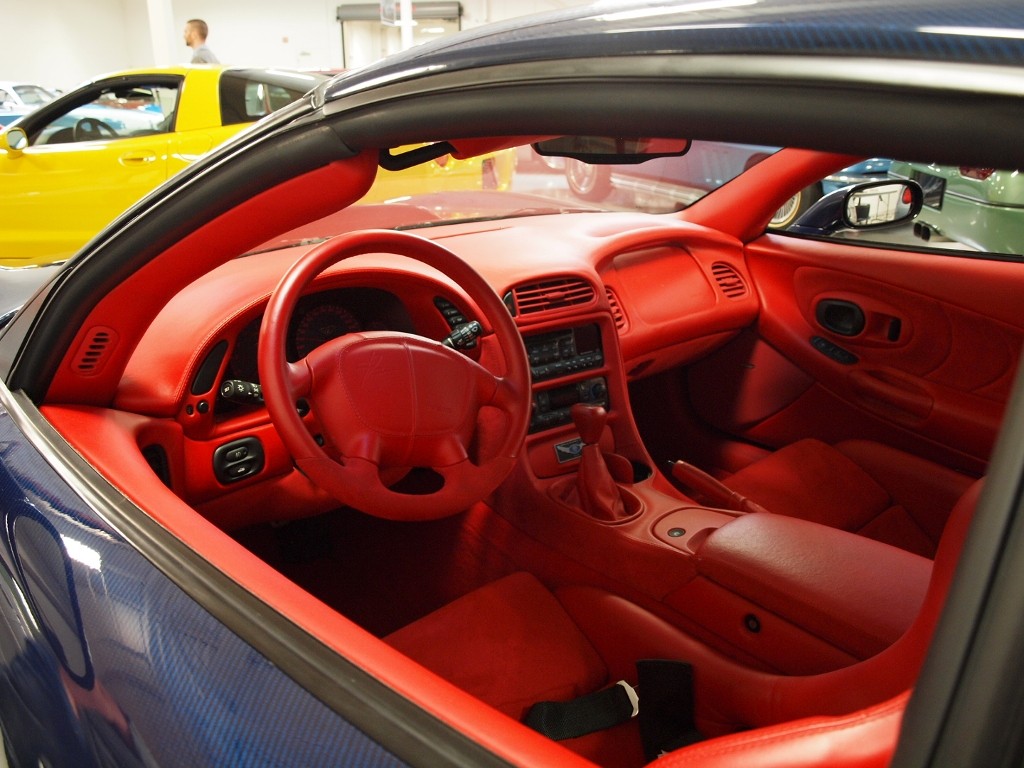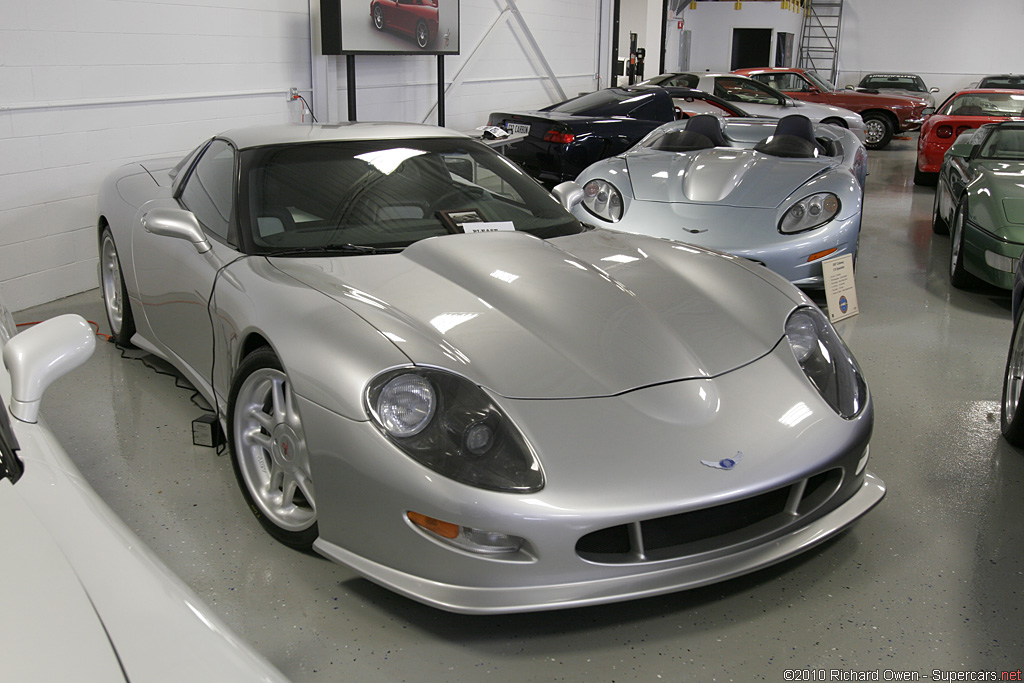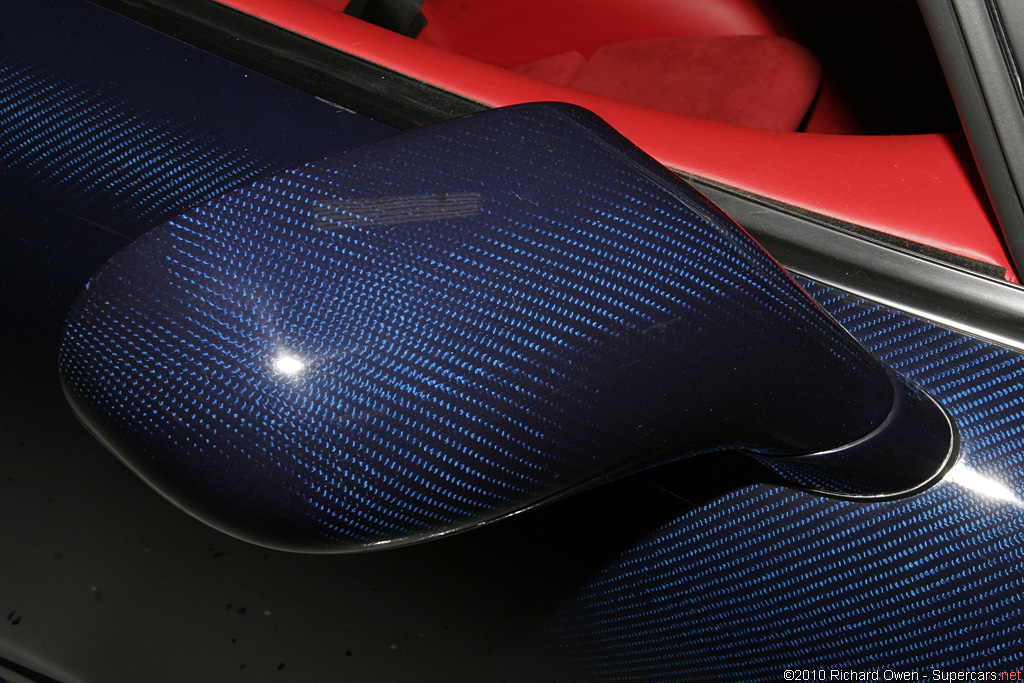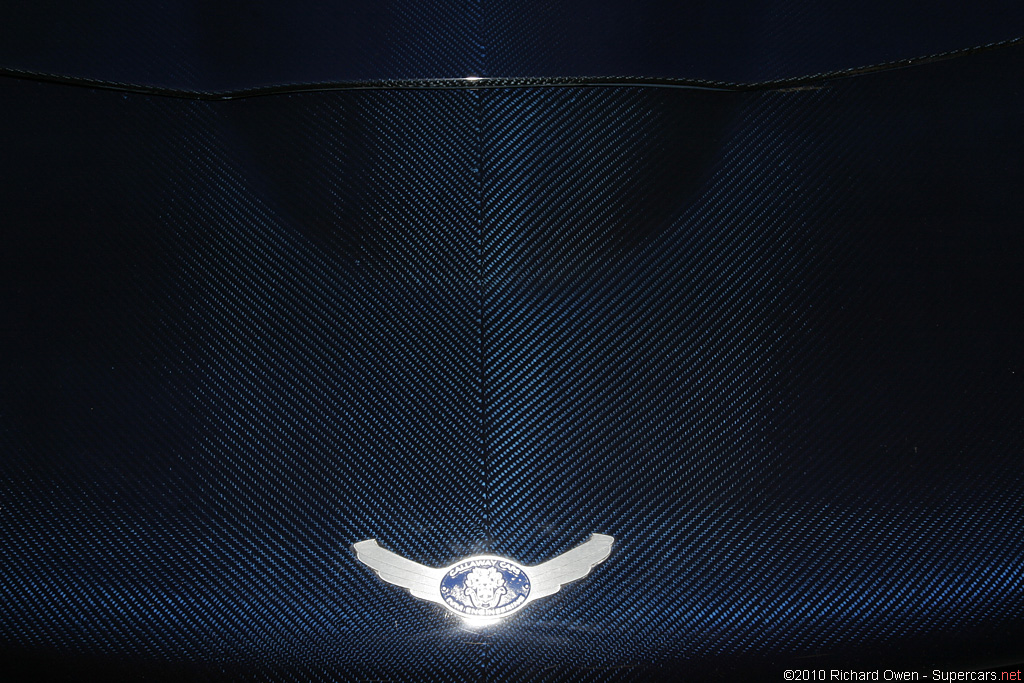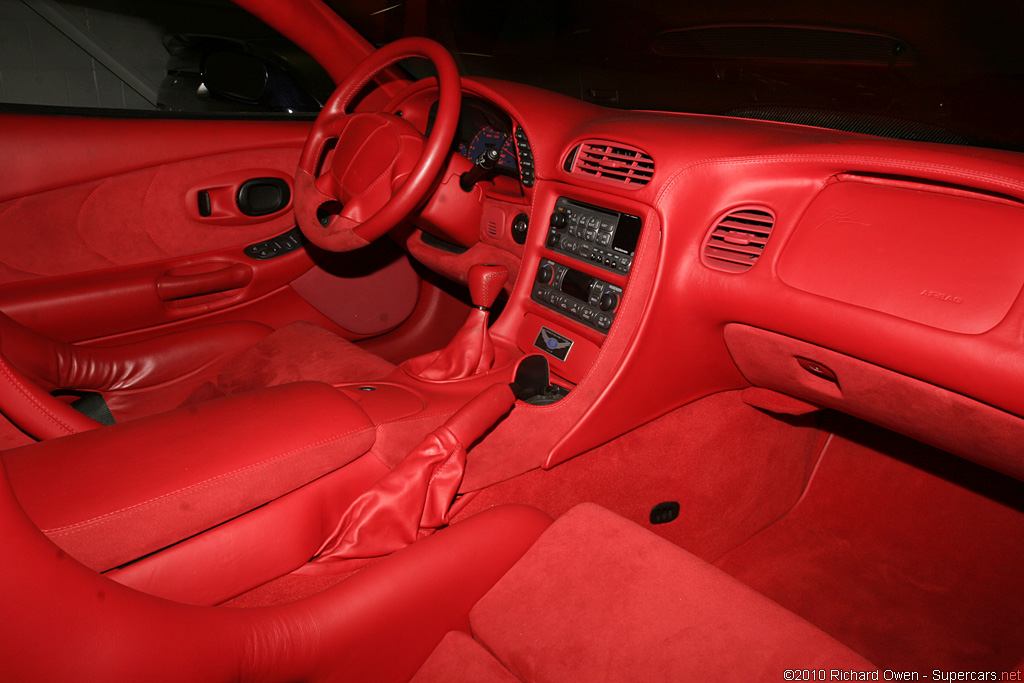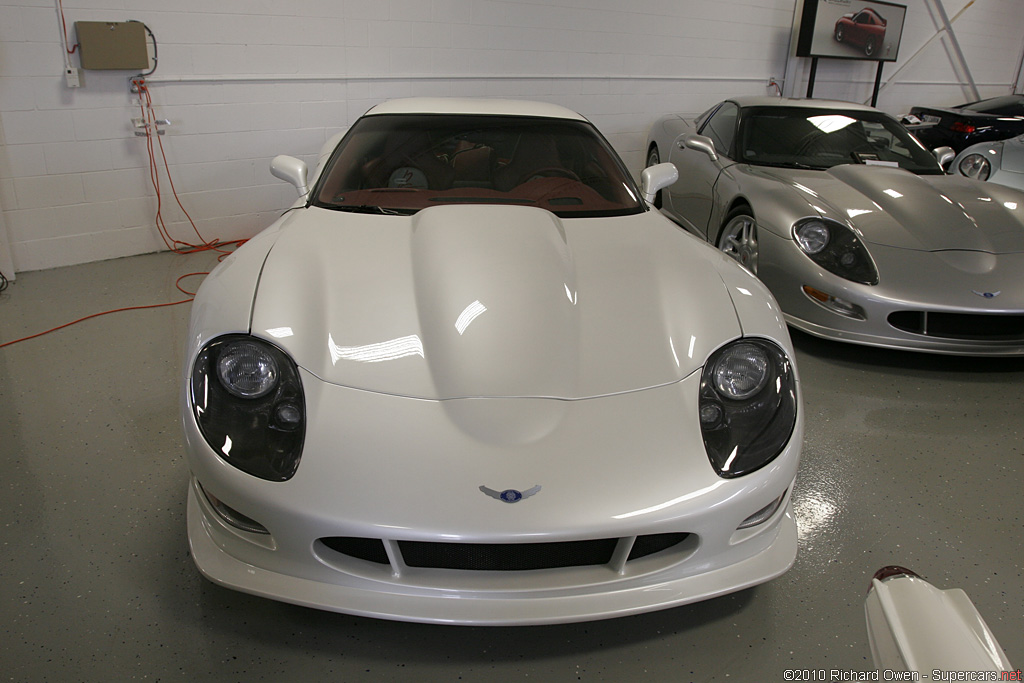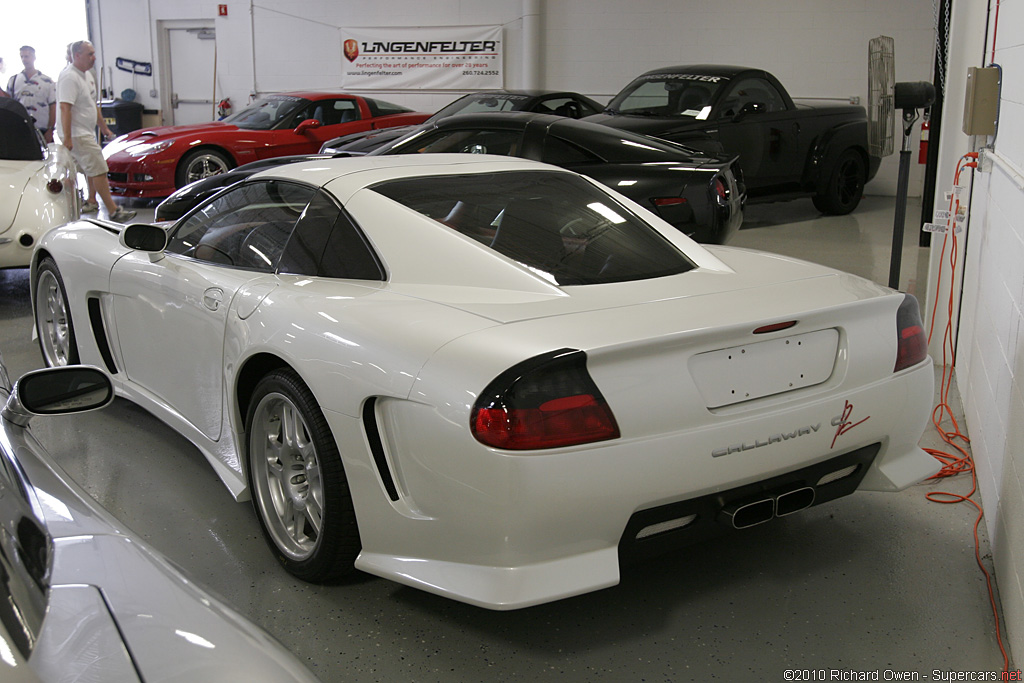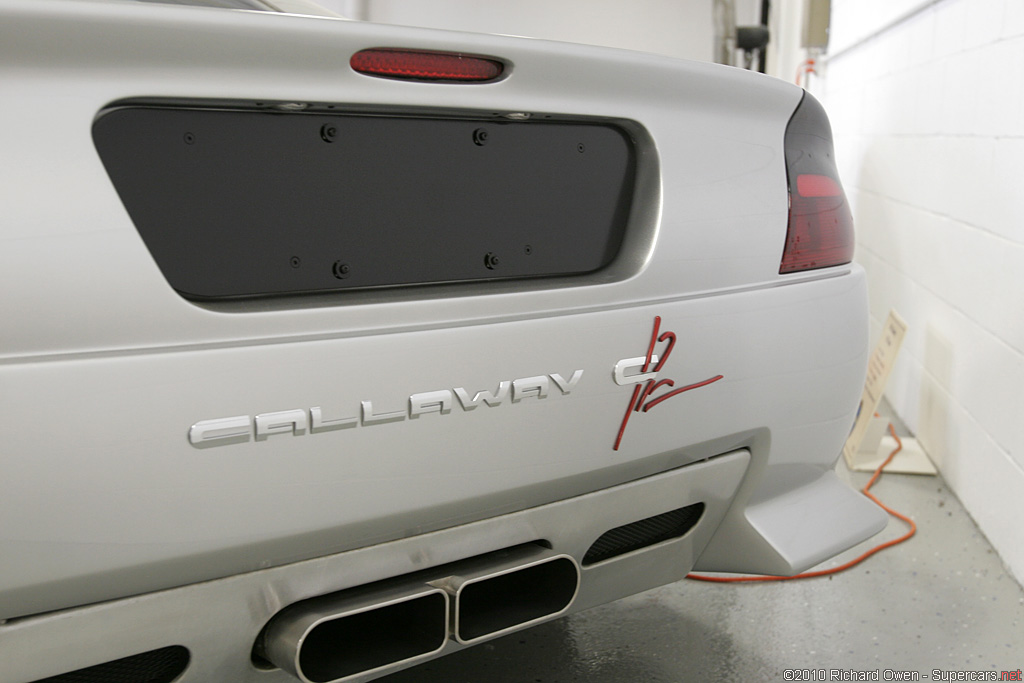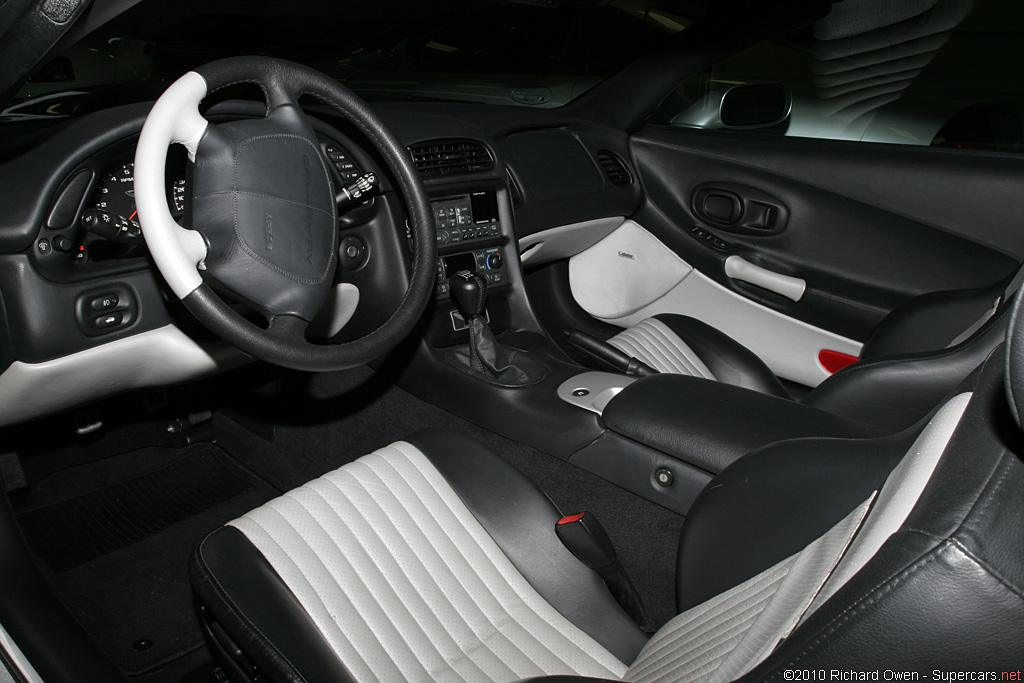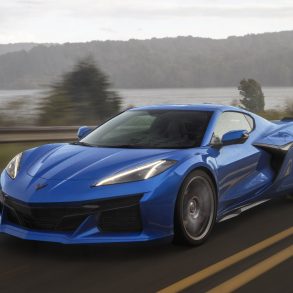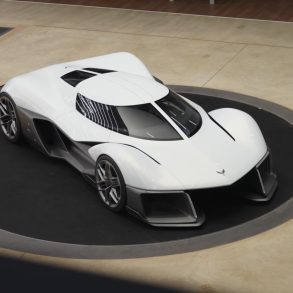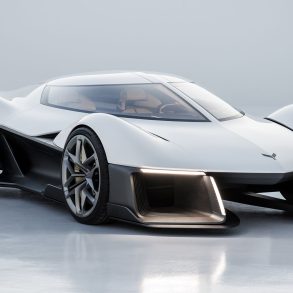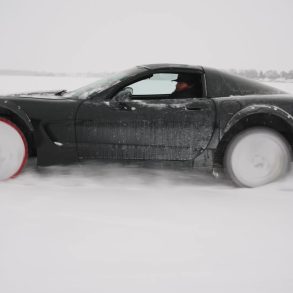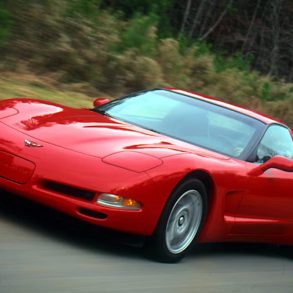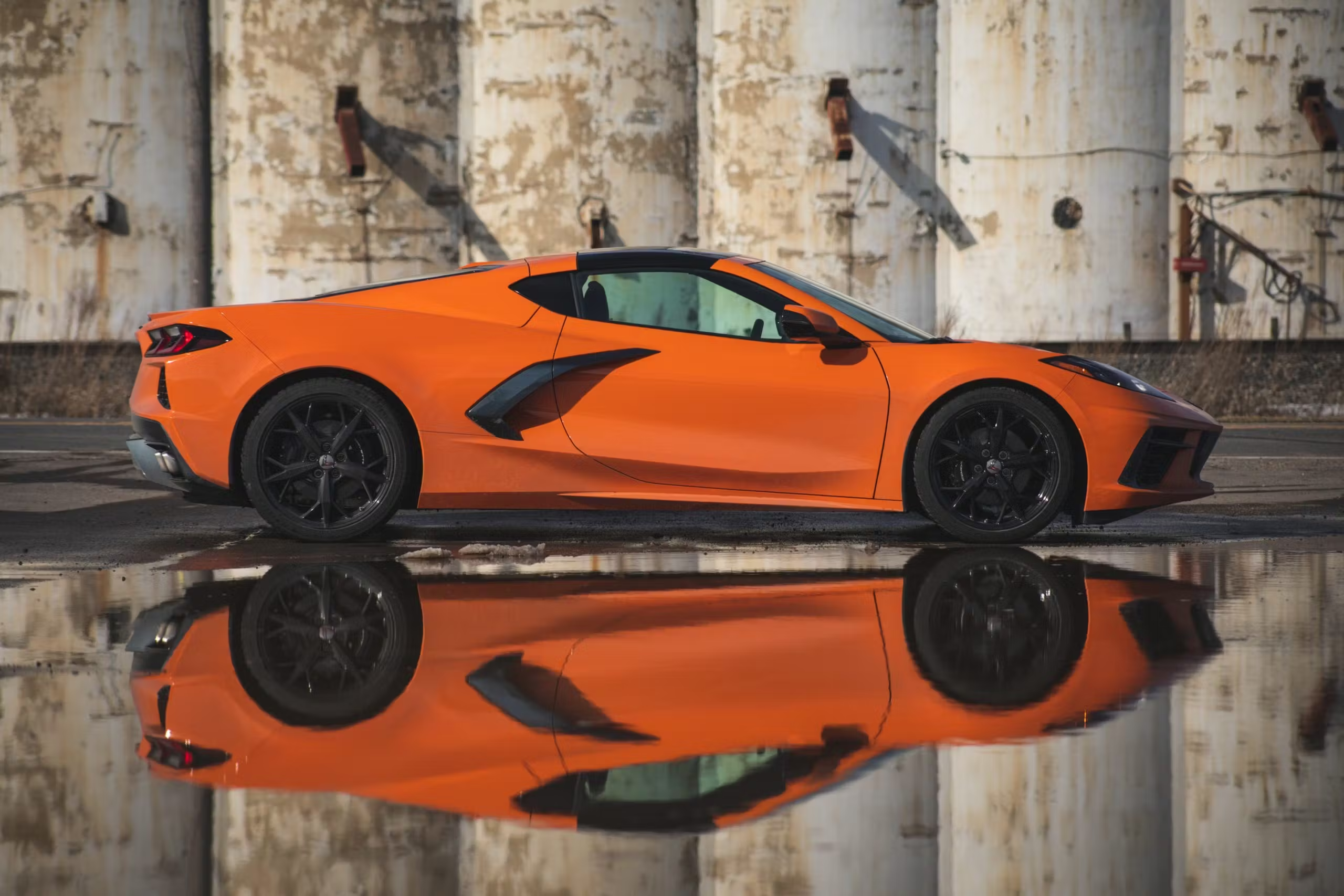From Chevrolet to Callaway: The C12 Corvette – A Pinnacle of Custom Fabrication…
Since its founding in 1977, Callaway Cars has been transforming Corvettes from performance-driven production cars into even higher-performance super cars. Their one-of-a-kind designs are almost as iconic as the Corvette itself, and the Callaway brand has become synonymous with some of the most unique, beautiful custom-Corvettes ever.
When Chevrolet introduced the fifth-generation Corvette in 1997, Callaway immediately began development of a platform that would compliment and enhance the all-new C5 model. Reeves Callaway, owner and founder of Callaway Cars, wanted to build a car that could also compete in the GT2 Class of the 24 Hours of Le Mans.
…the Callaway C12
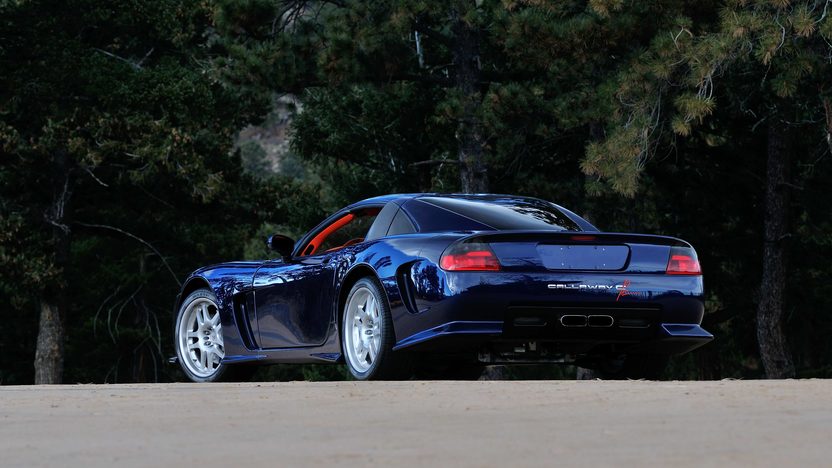
The result was the Callaway C12.
The car was designed, developed and manufactured as a cooperative between two automotive companies – Callaway Cars and IVM Automotive, a German-based vehicle development company.
Designer Paul Deutschman, a familiar name amongst Callaway enthusiasts, led the international team that created the body design for the C12. The team fabricated the car’s body first as a full-size clay model. Later, the body design was digitized and refined thru the use of CAD-based software. The design was critiqued and tweaked for drag, lift, aerodynamics and downforce.
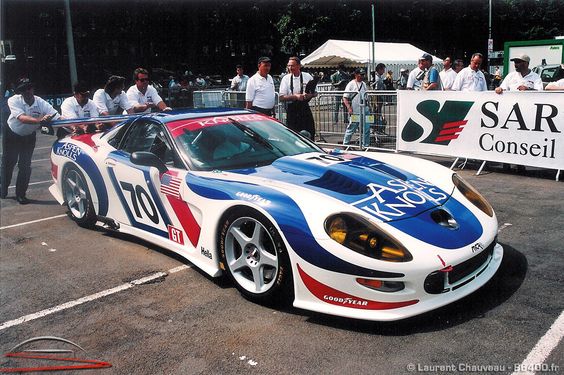
A Custom-Built Race Car?
From its inception, there was a dual focus behind the conceptualization and development of the C12. First and foremost, the C12 was designed to meet the stringent specifications established by the international production-based GT2 racing rules. Callaway’s end game was to build the C12.R and put his car on the track at Le Mans.
Second, Callaway knew that if he wanted his car to compete at Le Mans, he would have to homologate a street legal version of the car so that the racing version could compete. Even with that focus driving the development of the street legal version, he still wanted to create a car that provided high-performance drivability and handling while also providing its occupants with a “civilized interior and relaxed ride.”
While Reeves Callaway focused a good deal of time and effort into the development of an improved powertrain for his newest creation, one of the most significant elements of his design was the overall width of the C12’s body, which measured 1,998 millimeters at its widest. This measurement was just 2 millimeters short of the 2-meter maximum body width allowed by rules governing the GT2 racing classification.
Callaway’s intent behind the wider stance – beyond the governance of the GT2 rules – was simple: Having a wider chassis enables more balanced tire-loading during at-the-limit cornering which, on a race track, is pretty much the only type of cornering a driver will encounter. Balanced and distributed tire loading means higher cornering limits which translates into quicker lap times.
Under the Hood
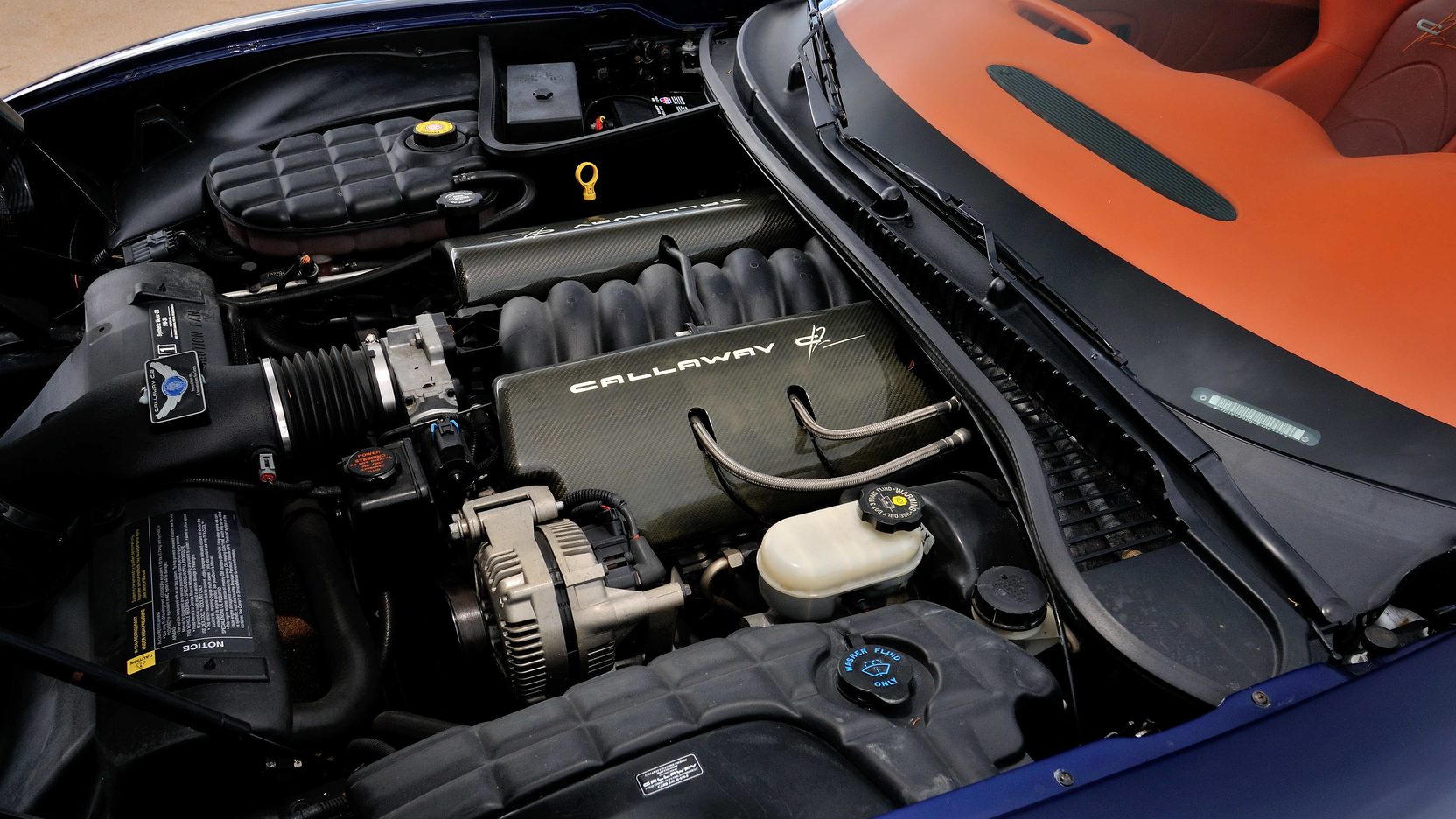
Beneath its hood, the C12 came equipped with a tuned/modified version of Chevy’s 5.7 Liter LS1 engine (the same engine (though heavily modified) that came standard in the C5 Corvette coupe and convertible models.) Known as the Callaway SuperNatural, the modified LS1 engine was capable of producing 440 horsepower at 6,300 rpms (a significant bump-up in power over the 345 hp produced by the stock engine in the base model Corvette.) The engine’s torque also increased from 350 lbs./ft. at 4,400 rpm to 395 lbs/ft at 5,200 rpm.
A more powerful 6.2 Liter V8 engine was also introduced in later C12 models after Chevrolet introduced the larger engine in its Z06 platform. The Callaway variant of the LS6 produced 482 hp at 6100 rpm and 466 lb-ft at 5200 rpm, with 90 percent of its torque available from 3200 rpm.
Additionally, the C12 also received significant modifications to the steering, braking and suspension systems focused on further enhancing the car’s handling capabilities. Some of the more significant modifications included:
- Increasing the overall track width of the front and rear wheels by five inches via longer, fabricated stainless-steel upper-and-lower suspension arms which moved the wheels further outboard and are controlled by Callaway-spec internally adjustable damper assemblies.
- Improved braking and a reduction in brake fade via 14-inch-diameter, ventilated metal matrix rotors that reduced weight and substantially improved heat dissipation.
- Road-gripping rubber thanks to the inclusion of Pirelli P-Zero 295/30ZR19 tires which were installed over custom, lightweight wheels.
Chevrolet or Callaway?
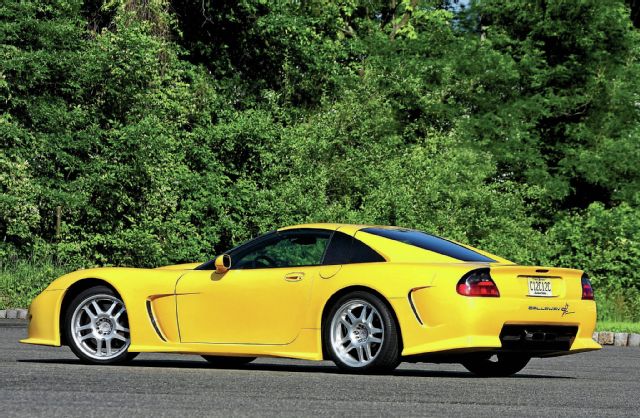
According to Reeves Callaway, the C12’s were built “to a standard rather than a cost” with the focus of marketing these cars to high profile customers such as Dale Earnhardt Jr., Rick Hendrick, Otis Chandler and Tommy Mottola.
While every C12 started its life as a C5 Corvette and was developed from the C5 platform, the C12’s final proportions were entirely different than the car upon which it was based. The C12 shares virtually none of the same body lines of the C5. In fact, the only shared components between the two cars are the door cut lines, the body-colored door handles and the greenhouse glass (the windshield, windows and rear decklid glass.)
The car featured new carbon fiber and kevlar panels that significantly altered the car’s appearance, giving the C12 a more “classic” sports car look with a more modern flourish.
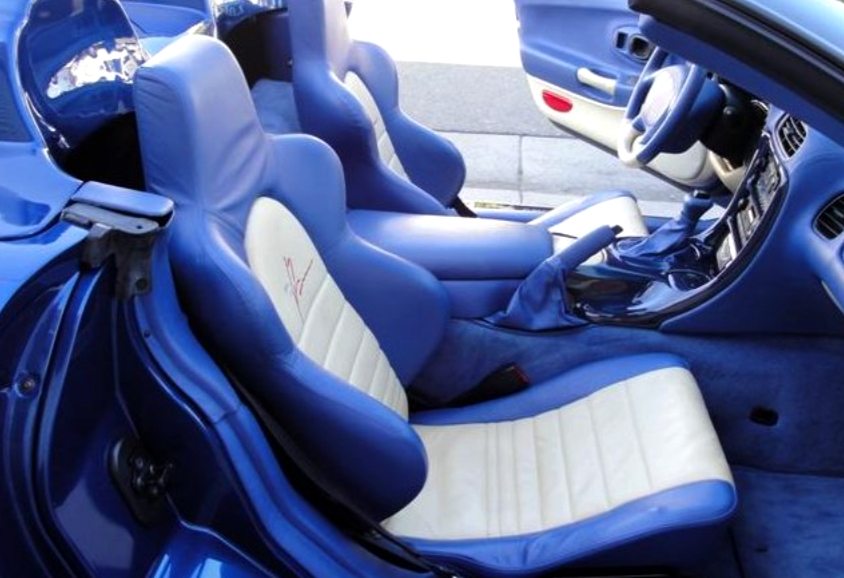
Moving inward, the car is still unmistakably a C5 Corvette, but Reeves and his team invested a lot of time and resource into ensuring that the driver’s experience – from aesthetics to ambiance – were unmistakably Callaway. The seats were wrapped in two-tone leather (which was carefully coordinated the the car’s exterior color), as were the steering-wheel and the airbag cover. Elsewhere, aluminum and carbon-fiber accents – from the shift knob to the console, instrument panels, doors and still – accentuate the interior with a more technical, high-performance feel.
Total production of the C12 occurred over a period of four years – from 1997 to 2001.
The C12 was introduced at the 1997 Geneva Auto Show as was one of the highlights of the show. It was considered Callaway’s crowning achievement after successfully producing almost a thousand high-performance vehicles. Because the car was built as a homologation between the American Callaway company and the German based IVM Automotive, the car was approved for sale worldwide, greenlighting the race car version for competition in the GT2 class at Le Mans.
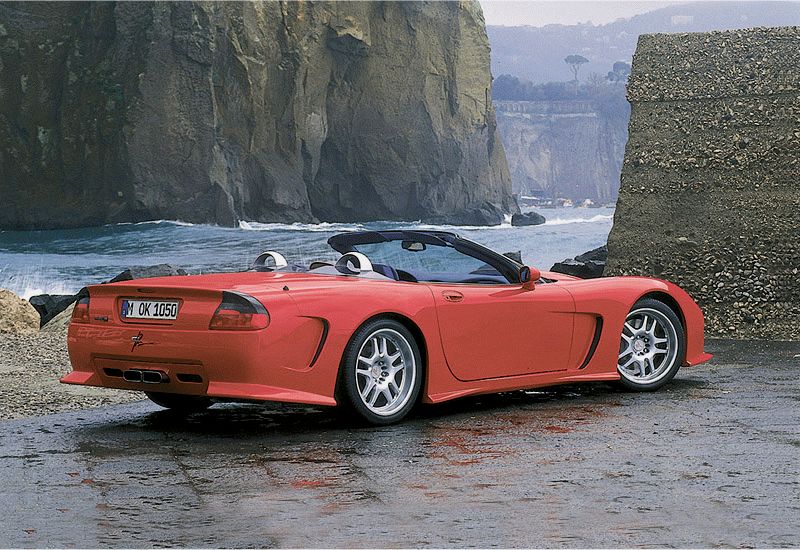
The European versions of the C12 were built in Bad Friedrichshall by IVM and were marketed as the IVM C12. The European version of the car was offered as a Coupe, Hardtop and a Cabriolet. The prices for the IVM C12 ranged from 350,000 DM ($223,500 USD) to 370,000 DM ($236,000 USD).
The car was so different from its Corvette origins that the C12’s produced in Europe were actually titled as Callaways, not Chevrolets.
The U.S. Callaways were also distinctly different. So much of the Corvette coupe that had served as the cornerstone of the C12 had been changed or replaced during the conversion process. Callaway (and IVM) had tweaked, modified and outright re-engineered virtually every system on the car. The car was considered such a departure (mechanically as well as aesthetically) that it was said that the C12 would be unrecognizable at a local Chevy dealer.
In total, just 20 cars were produced – and no C12 was built so much as it was custom assembled to the specific desires of those placing the order. Each of the U.S. based Callaways sold for approximately $200,000. They are still coveted by leading car collectors worldwide.
As for Reeve Callaway’s ambitions to race the C12? The car’s crowning achievement was when a Callaway C12.R took the pole position for the 2001 24 Hours of Le Mans, out-performing entrants from Porsche, Ferrari and other world-class marques. Although the car never won in competition on the track, the car’s technology program did bleed over into the production vehicle, giving rise to the sharing of information between the racing and production engineering teams.


